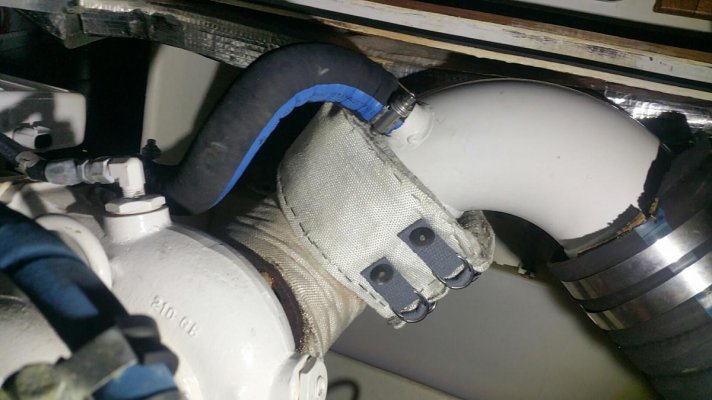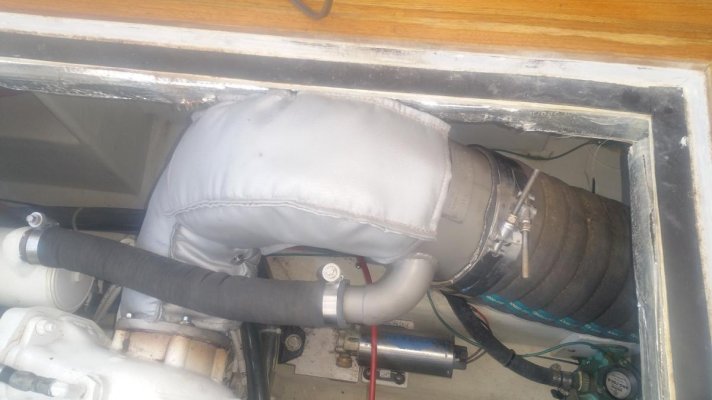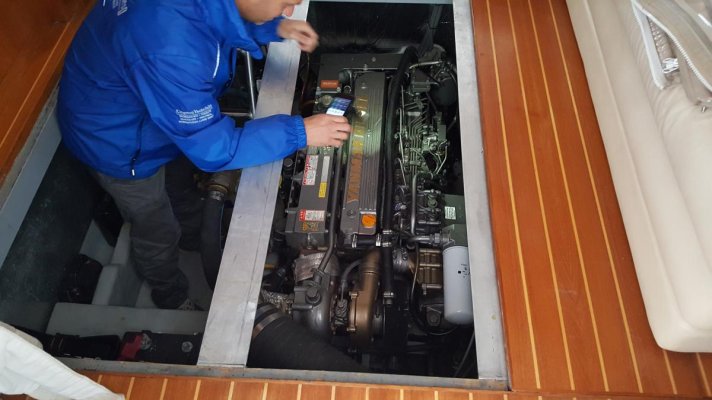jbbmillar
Veteran Member
- Joined
- Oct 27, 2011
- Messages
- 62
- Vessel Name
- Mainia
- Vessel Make
- Mainship 390
On two occasions while on a mooring the seas kicked up and were hitting on the starboard aft quarter and hydrolocked my engine. Our 350 is a 2002 model with a single Yanmar 6LYASTP.
The first time was nearly catastrophic, with sea water in the cylinders, crankcase and intake manifold. Quick action after being towed 25 miles to my slip removed the water and saved an overhaul, but I'm still seeing traces of sodium in the oil analysis.
The second time happened when I was ashore and didn't think it was that rough. I returned to the boat and caught it before more than a cylinder of two flooded. Just had to pull the injectors.
This also happened to a friend with a Ranger Tug with this engine.
I now pop a 2.5qt plastic paint bucket in the exhaust outlet when not in a totally protected area.
I'd like a more permanent solution that doesn't include require spending a couple of boat units and redesigning the exhaust to add more rise.
Am I the only Mainshpper who's had this happen?
Prevention suggestions? I've considered adding a flap, but undeway the exhaust outlet orientation might make a flap problematic.
The first time was nearly catastrophic, with sea water in the cylinders, crankcase and intake manifold. Quick action after being towed 25 miles to my slip removed the water and saved an overhaul, but I'm still seeing traces of sodium in the oil analysis.
The second time happened when I was ashore and didn't think it was that rough. I returned to the boat and caught it before more than a cylinder of two flooded. Just had to pull the injectors.
This also happened to a friend with a Ranger Tug with this engine.
I now pop a 2.5qt plastic paint bucket in the exhaust outlet when not in a totally protected area.
I'd like a more permanent solution that doesn't include require spending a couple of boat units and redesigning the exhaust to add more rise.
Am I the only Mainshpper who's had this happen?
Prevention suggestions? I've considered adding a flap, but undeway the exhaust outlet orientation might make a flap problematic.




